Are you a Quiet Speculation member?
If not, now is a perfect time to join up! Our powerful tools, breaking-news analysis, and exclusive Discord channel will make sure you stay up to date and ahead of the curve.
Well, it's been quite a week hasn't it? The banning of Splinter Twin really touched a nerve with the whole community. However, that is now firmly behind us and continuing to bemoan (or extoll) that decision adds nothing new or useful. Instead, let us look to the future and answer the burning question: What now?
![Lingering-Souls-Art-by-Bud-Cook-615x450[1]](https://quietspeculation.com/wp-content/uploads/2016/01/Lingering-Souls-Art-by-Bud-Cook-615x4501-e1453795647348.jpg)
Looking to the immediate future, next weekend there is a StarCityGames Open with a Modern Classic in Columbus. The weekend after there will be a Modern Pro Tour in Atlanta that some of you will be going to, and I wish I would stop getting second at PPTQs so I could join you. Therefore I (and most of the rest of you) will be attending SCG Regionals the Pro Tour weekend instead. To that end I, and all of you I expect, have been extensively testing Twinless Modern. I'm going to share my testing process today, as well as where I am in my deck selection process. Hopefully this will help you to refine or jumpstart your own, or at least avoid some of the pitfalls I've run into. Let's start at the beginning.
[wp_ad_camp_1]
It's a Good Place to Start
When a new set "normally" comes into Modern the main considerations you need to make are:
- What was the metagame before the release?

- Did the release add any new cards/decks?
- Do those new cards affect my deck?
- Does this affect any of my matchups?
This will obviously depend greatly on the set and your deck. Khans of Tarkir obviously added many new cards and even some decks (Jeskai Ascendancy), drastically changing the Modern landscape (beyond Treasure Cruise I mean). In the Khans case, most players should have been answering "yes" to all those questions. A set like Born of the Gods on the other hand? Not so much (Brimaz, King of Oreskos and Courser of Kruphix see a little play).
This questioning doesn't work when a banning is thrown into the equation. It suddenly becomes a far more complicated affair, with the additions of:
- Does the loss of a good/bad matchup make {deck} (un)viable?
- Is {brew} now playable?
- What becomes of {banned deck} players?
- How does my sideboard need/able to change?
- What will the metagame look like?
Etc., etc., etc. While these are important questions to consider, addressing them all at once is not just overwhelming but unhelpful. You need to simplify. Scientists seek to test as few variables as possible for a reason, and in analyzing a new metagame, especially one where a format staple is gone, we should follow suit. My education was in economics and in that field we theorize and test variables ceteris paribus or all other things the same. While this isn't the most "complete" way of thinking about a new metagame, it is certainly more digestible, so I always start with a few ceteris paribus assumptions. Here are those assumptions after the Twin banning.
1. Decks with a bad Twin matchup get better
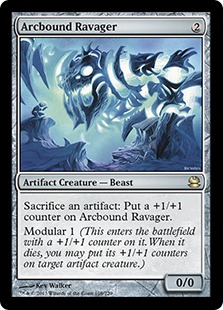 This shouldn't surprise anyone. Everyone, myself included, has lamented the fact that Affinity's worst matchup is now gone, a matchup that was bad for Tron, Scapeshift, and (depending on who you ask) Infect. Now that the turn four, two-card combo is no more, any deck that struggled to race it suddenly has more time to set up and/or can become more linear by eliminating the interaction they had to run to keep the matchup manageable. Exactly how this will pay out is unclear, but the baseline assumption still holds.
This shouldn't surprise anyone. Everyone, myself included, has lamented the fact that Affinity's worst matchup is now gone, a matchup that was bad for Tron, Scapeshift, and (depending on who you ask) Infect. Now that the turn four, two-card combo is no more, any deck that struggled to race it suddenly has more time to set up and/or can become more linear by eliminating the interaction they had to run to keep the matchup manageable. Exactly how this will pay out is unclear, but the baseline assumption still holds.
1b. Corollary: The converse is not necessarily true.
Just because a good matchup is suddenly gone does not necessarily mean your deck is not viable. Twin was 12.8% of the metagame on average over the last year so if the only reason to play your deck was because it beat Twin then it probably wasn't all that good to start with. Your deck must still have other good matchups and they remain good without Twin in the picture ceteris paribus.
2. Everyone knows about Assumption 1
This also shouldn't surprise anyone since it's obvious and has been what everyone has talked about. If you aren't aware of the above Assumption 1 then you're doing a very good job hiding in your cave (can I join you until the election is over?). Across numerous sites and message boards, including our comments section, players and authors have been saying that Affinity is the big winner from the ban so it stands to reason that every enfranchised player is aware of this whether they agree with it or not. Thus, at least some will act on this belief. There will be attempts to "Next Level" the tournament, either through unusual deck selection or metagamed sideboard choices.
3. Bx Eldrazi will continue to gain popularity
This was true before the ban. There's no reason to think it will stop now. Eldrazi has been everywhere online and in articles and there is no reason to think it is going away.
4. Popular decks will stay popular
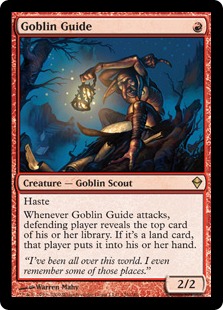 Modern decks are expensive so it stands to reason that most players, having invested in a deck prior to January 18, will try to stick with their deck from before unless forced to change. Following this, a Burn player is more likely to remain a Burn player than change decks because a) they're invested both financially and time-wise, b) they already know how to play the deck, c) the Sunk Cost Fallacy means people tend to stick by their investment regardless of the value of doing so, and d) the deck may actually still be good.
Modern decks are expensive so it stands to reason that most players, having invested in a deck prior to January 18, will try to stick with their deck from before unless forced to change. Following this, a Burn player is more likely to remain a Burn player than change decks because a) they're invested both financially and time-wise, b) they already know how to play the deck, c) the Sunk Cost Fallacy means people tend to stick by their investment regardless of the value of doing so, and d) the deck may actually still be good.
You could certainly make more assumptions, but I'm sticking to these since, again, too many variables makes for unfocused study. Also, I have no way of knowing what the former Twin players will be doing. I'd imagine they'll stay URx, but whether or not that will be Delver or Grixis-style control is impossible to know, so I assume nothing about them. Looking at these three-and-a-half points, Assumptions 1 and 3 seem like good places to actually start our investigation. 4 is useful for purposes of testing since it allows us to use known decks from the previous gauntlet without worrying about wild changes being present, but it's not really something we can analyze. Basically it's me calling ceteris paribus on the rest of the metagame.
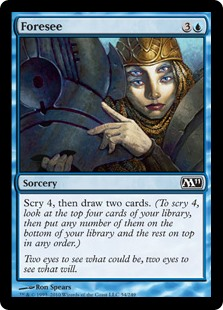 The problem with Assumption 2 is that it is very murky and relies on your ability to predict your opponents biases and deck selection. Go too far into this line of thought you fall down the rabbit hole of I know you know I know and that just confuses everybody. Unless you're going to a very small tournament, either an Invitational or your LGS, where you know exactly who will be there and what they tend to play, don't try to metagame deck choice in a new format. In an open tournament there is far too great a risk of Next Leveling yourself and picking a deck with no chance of winning against the actual metagame.
The problem with Assumption 2 is that it is very murky and relies on your ability to predict your opponents biases and deck selection. Go too far into this line of thought you fall down the rabbit hole of I know you know I know and that just confuses everybody. Unless you're going to a very small tournament, either an Invitational or your LGS, where you know exactly who will be there and what they tend to play, don't try to metagame deck choice in a new format. In an open tournament there is far too great a risk of Next Leveling yourself and picking a deck with no chance of winning against the actual metagame.
It's like picking Scissors in a field full of Rock, which Mike Flores, Brian Kibler and Richard Feldman wrote about a long time ago. For those too lazy to read those important pieces of theory, picking a targeted anti-deck pays off when you have The Read on a given tournament and fails unless you have a more general Plan B or a transformational sideboard. With this being Modern and sideboard space at a premium, that transition is quite hard. Stick to the variables you can observe and control and disregard everyone else's deck choice in your decision making. It will save you from inbred testing and a severe headache.
What do our Assumptions Mean?
What 1 and 3 suggest to me is that linear aggro and big mana strategies will be more popular than you would "normally" expect, at least in the short-term. Scapeshift is kind of an outlier since it is a combo deck that uses lots of land, similar to how Eldrazi is a midrange/ramp deck that uses a lot of land. That said, all these decks are trying to execute their gameplan while ignoring the opponent as much as possible. This suggests if you want an edge in deck selection you should either seek to force interaction and cripple the opposing game plan or have a faster goldfish. I consider these assumptions my testing parameters and use them to determine which deck(s) I spend my time on. Assumption 4 means that once I establish my deck's viability against the testing parameters, I need to run the full gauntlet and find out if my results are actually valid.
Where I Started
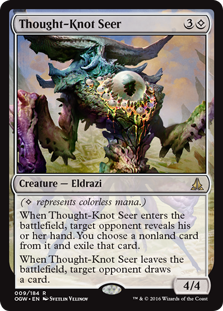 Those of you who read last week's article will remember I was working on both Esper Mentor and Merfolk. However, they aren't the only decks I keep in stock. I also keep UW Titan and Wx Hatebears mostly built in case the meta becomes favorable. With Twin gone and a poor matchup for the latter two decks eliminated, I gave all four decks a stress test under my established parameters to see how things went. I picked representative Affinity, Tron, and Infect lists from the Charlotte Open (they're all almost the same at this point), Thien Nguyen's Scapeshift list, and built an processor-based and Heartless Summoning version of BW Eldrazi. I modeled it on numerous lists I saw online using Thought-Knot Seer and Matter Reshaper. Then I played as many games against them as I and my testing partners could stand.
Those of you who read last week's article will remember I was working on both Esper Mentor and Merfolk. However, they aren't the only decks I keep in stock. I also keep UW Titan and Wx Hatebears mostly built in case the meta becomes favorable. With Twin gone and a poor matchup for the latter two decks eliminated, I gave all four decks a stress test under my established parameters to see how things went. I picked representative Affinity, Tron, and Infect lists from the Charlotte Open (they're all almost the same at this point), Thien Nguyen's Scapeshift list, and built an processor-based and Heartless Summoning version of BW Eldrazi. I modeled it on numerous lists I saw online using Thought-Knot Seer and Matter Reshaper. Then I played as many games against them as I and my testing partners could stand.
UW Titan
My Titan lists harken back to the pre-Deathrite Shaman era of Modern when Bloodbraid Jund dominated and the best way to grind out a win against it was recurring Kitchen Finks (not the best way to beat it, just to grind it out). Instead of the dedicated recursion engine Trevor showcased a while ago, my lists are more about maximizing individual value than the whole being greater than the parts.
UW Titan, by David Ernenwein
When I've played the deck previously it had a very good matchup against Grixis, Burn, and BGx, and could hold its own against Tron and Bloom thanks to Ghost Quarter. The countermagic kept Scapeshift reasonable. The problem was it was a bit light on creature removal and so was vulnerable to Affinity and Infect pre-board. This was still true now. To make matters worse, Eldrazi is far more resilient to Ghost Quarter than Tron or Bloom since Eldrazi Temple and Eye of Ugin are more readily replaced by basics than Tron pieces are. UW Titan also wasn't fast enough to race Oblivion Sower and Ulamog, the Ceaseless Hunger. While it was still a solid choice against the rest of the metagame, I didn't think it could be made good enough to overcome the test parameters and so I tabled Titan. If BGx comes back in a big way then I'll run it, but not now.
Wx Hatebears/Death and Taxes
The thing about Hatebears/Death and Taxes is that you never ask if the deck is good but rather is Leonin Arbiter plus Ghost Quarter and Thalia, Guardian of Thraben good enough. In my experience, the more degenerate the format is, the better these cards become: making degenerate decks play 'fair' usually causes them to fall apart (just look at Legacy DnT vs. Storm). During the Treasure Cruise era they frequently were, although you also lost to Forked Bolt quite a bit.
Mono-White Death and Taxes, by David Ernenwein
In the previous metagame, Thalia and Arbiter were rarely enough. Affinity was too fast and creature-heavy for Thalia to be good and too many other decks played too many lands for mana denial to be effective. You'd sometimes get lucky but more often you were just delaying how long it took for your creatures to be hopelessly outclassed.
This proved to be the case again, and while Strip Mine was surprisingly good against Eldrazi, if any of their threats ever resolved it was game over. Also, while the disruption package was decent against Tron, Pyroclasm was much better against us and swung many games in Tron's favor. It's harder for this deck to play around sweepers than Merfolk since your creatures are also your disruption, do not exponentially scale, have low toughness, and you need a more of them in play to win. I tested several different color/card combinations and configurations and the results were the same in all lists: if you couldn't set up the soft lock, took too long to win, or if they wriggled out of it on their own, you lost. Craig Wescoe and Eric Froehlich might disagree, but I don't think Hatebears is a good choice for the new Modern.
Merfolk
The list I showed you last week was the result of changes made based on the above assumptions. So far they've been right on the money and the deck remains unchanged since that past Monday.
UW Merfolk, by David Ernenwein
Prior to the banning, the deck had poor matchups against Affinity and Infect. It also always lost to Tron when it played Ugin, the Spirit Dragon, but normally won otherwise. Scapeshift was a manageable race and Eldrazi was a cakewalk. The Bx Processors didn't interact enough and was not sufficiently fast to win before you swamped them with fish. With the updates, the Affinity and Infect matchups improved slightly, though you were still unfavorable despite Echoing Truth and Harbinger being very good in both matchups. Scapeshift was worse without the counters, though still reasonable, and Eldrazi was still good even if Thought-Knot Seer proved better than expected. This satisfied me enough that I'm moving ahead with testing this deck for Regionals.
Esper Mentor
Like I said last week, I was very disappointed this deck lost a good matchup in Twin and was worried about both Affinity and Eldrazi. I also noted Affinity was probably fixable with Drown in Sorrow. The price, as it turned out, was that I had to cut the Monastery Mentors to make Drown work.
Esper Tokens, by David Ernenwein
The Drowns were surprisingly good against both Infect and Affinity, greatly improving the matchup pre-board. The loss of Mentor was not terrible since it was never great in my bad matchups and died too readily against the midrange decks. He could potentially produce a huge clock against control decks but isn't where you want to be against big mana. Tron, Scapeshift, and Eldrazi were still problems, but that was mostly the result of Inquisition being very bad against them. As this seemed fixable, I decided to move ahead with testing Esper as well.
Where I am Now
There isn't much more to do with the Merfolk list. I've tested Sea Gate Wreckage as a one-of and it's good against attrition decks but pretty useless elsewhere so I'd leave it at home for now. The sideboard is still in flux and I need to wait until we get a better 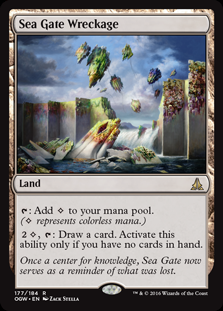 idea of where the metagame is heading before I commit to anything. Harm's Way is looking attractive for both Burn and aggro matchups, but I'd rather not board in purely reactive spells. I may end up wanting Sunlance if aggro is big. I'm not as keen on 'Folk as I normally am since it did very well in Atlanta this past weekend and will be on people's minds going forward. It also suggests I should update my sequencing guide for the Merfolk mirror. However, my pet deck continues to prove the Merfolk core is still very strong and resilient despite being a well-known quantity. Harbinger of the Tides finally has the aggro and (judging by Todd Anderson's deck) tempo matchups it needs to really shine. Spreading Seas is proving its worth slowing down Tron and Eldrazi. If Affinity and Infect weren't looming in the background, it would be an easy pick for me.
idea of where the metagame is heading before I commit to anything. Harm's Way is looking attractive for both Burn and aggro matchups, but I'd rather not board in purely reactive spells. I may end up wanting Sunlance if aggro is big. I'm not as keen on 'Folk as I normally am since it did very well in Atlanta this past weekend and will be on people's minds going forward. It also suggests I should update my sequencing guide for the Merfolk mirror. However, my pet deck continues to prove the Merfolk core is still very strong and resilient despite being a well-known quantity. Harbinger of the Tides finally has the aggro and (judging by Todd Anderson's deck) tempo matchups it needs to really shine. Spreading Seas is proving its worth slowing down Tron and Eldrazi. If Affinity and Infect weren't looming in the background, it would be an easy pick for me.
Esper Tokens, on the other hand, is showing considerable promise. It is very strong against Affinity and Infect thanks to discard and Lingering Souls. Swapping out the Inquisitions for Thoughtseize improved the big mana matchups and are still reasonable against aggro (Burn, less so), though I've been swapping them for the less painful option in sideboard games. I want both since extra discard is good against Grixis, Scapeshift, Grishoalbrand, and Jund so it's more a choice of which is the four-of in the maindeck. Esper Tokens is still somewhat weak to them, and that problem may not be fixable, but now you can prevent their big turn more readily and are more likely to race with Finks and Spirits than before.
Esper Tokens
I like the scry from Drown, but if Abzan Company is big in your area then Flaying Tendrils is better. This deck is the Abzan to Grixis' Jund and grinds very hard with Lingering Souls and Sorin. The manlands are also very important in a lot of matchups. I added another Finks over Clique due the former's value in offsetting the additional life you're losing from Thoughtseize. I've still got two weeks to work on it but I'm curious to hear your thoughts as well.
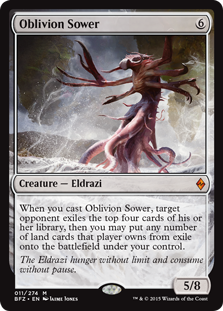 This still doesn't answer the question of what deck I will play for Regionals and the reason is that I don't know yet. Merfolk will be better against a metagame full of big mana while Esper is the pick if aggro decks rule the day. Testing against the rest of the field is underway and, frankly, both decks are about equal for me. Tokens has better aggro matchups while Merfolk's speed is better against combo. Both are reasonable against midrange. In this situation, there is no true "right" decision. Each deck is weak against an opposing end of the metagame spectrum and are good to even against everything in the middle. The choice comes down to personal preference and what you perceive the metagame is doing.
This still doesn't answer the question of what deck I will play for Regionals and the reason is that I don't know yet. Merfolk will be better against a metagame full of big mana while Esper is the pick if aggro decks rule the day. Testing against the rest of the field is underway and, frankly, both decks are about equal for me. Tokens has better aggro matchups while Merfolk's speed is better against combo. Both are reasonable against midrange. In this situation, there is no true "right" decision. Each deck is weak against an opposing end of the metagame spectrum and are good to even against everything in the middle. The choice comes down to personal preference and what you perceive the metagame is doing.
Unfortunately, we just don't have enough information to make a guess (and no matter what anyone says it will be a guess) at what the February 6 metagame will look like. The SCG Atlanta results suggest an aggro metagame, but one datapoint is not a trendline. If this continues through Columbus at the end of the week, that will be significant and will make my decision easier. If not, then things will get interesting. I'd advise you to keep watching SCG for IQ and Classic results and make your metagame call no later than next Tuesday so that come Friday you will be ready for whichever event you're attending.


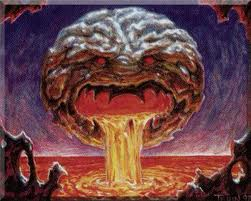


I don’t think you have the luxury in this format to play a deck with grindy elements right now. Tron will punish you if you don’t get your feet on the ground and aggro will take you for a spin if you don’t play proactively. I’m personally trying out aggro builds like temur delver and URx prowess that keep some interaction but with a proactive game plan.
It depends. If Tron and Eldrazi define the new metagame then I absolutely agree with you. However if the meta is more like what we saw in the Atlanta Top 16 then midrange and control are viable and possibly even well positioned. As I said, we’ll have to wait and see what Columbus brings us before drawing any conclusions. I do expect aggressive lists and Affinity to dominate the first week of the new format since they always do but next week will give us a measure of their staying power.
For what it is worth, with a uw titan deck in the days of DRS Jund, I managed to have a good matches vs tron. The trick was to run 4 Ghost Quarter 2 Tectonic Edge, plus some mindcensors in the sb. Bx Eldrazi makes life tough though. Can’t say I see myself playing a grindy deck in Modern any time soon.
Hm… that Death & Takes list intrigues me, but your results are a tad discouraging. I find myself wondering if a bit more beef in the form of Brimaz and Restoration Angel could solve some of its sweeper-centric woes (though I would think that Thalia and the Wingmare would make those a bear to cast) by providing a faster clock which is more resilient to sweepers and damage-based removal in general. What say you?
I’ve tried Brimaz and Resto before and while it did feel better the end result was the same, if the opponent can escape or ignore the soft lock you’re screwed. Pyroclasm is especially problematic because it’s so cheap. Your clock is just not very impressive compared to other Modern decks. DnT’s problem is that it doesn’t want to face fair decks. Wescoe’s GW Hatebears is better against fair decks but weaker to combo. If I knew that I’d be facing Grixis then this DnT list would be an excellent choice since they don’t run sweepers generally and frequently operate on 4 or fewer lands, which makes your taxes more effective. Thalia and Wingmare are very annoying for many decks, but most are able to survive long enough to play lands and free themselves. If we had a more broken or mana tight metagame it would be a much different story.
Death & Taxes, sorry. I’ll also add that I’m not really sure what to make of that tokens list. I think it could use a bit more depth in the counterspell suite (you’re not running Baby Jace or Mentor, so you don’t need to focus on sorceries so much), and 4 Thoughtseize plus Painful Truths feels somewhat suicidal against aggro in Game 1 (especially Burn). There’s not much reason to run Wrath of God over Supreme Verdict in this meta (and a whole lot to gain, especially against Merfolk), and I think I’d rather see Timely Reinforcements over Kor Firewalker overall.
The problem with Remand and Mana Leak is that both are bad against aggro and Eldrazi. Negate is ok against Scapeshift and Grixis but bad everywhere else, and casting Cryptic Command in this deck is a little too ambitious. Spell Snare has targets against nearly every deck so we stick with it, and it protects against losing to Grishoalbrand. Thoughtseize is not that bad against agro or burn, since it gains you more life than it costs, but I do side it out for Inquisition in those matchups. Painful Truths is similarly good especially when digging for Sorin or Dispel. Trading a Bolt for three cards after exhausting your opponent’s hand is surprisingly good even at low life since you usually find an answer or a clock to finish the game, which is important since Burn will beat you every time given time. I agree with you about Wrath, but I see a lot of Experiment One and Ezuri which require Wrath. I’ve gone back and forth between Firewalker and Timely because if this deck draws Timely late it struggles to get full value from it and Firewalker is very good against UR Prowess.
How about Flaying Tendrils over the Drown in Sorrows? You lose the Scry, but the exile is relevant against many things (Finks and K-Command decks spring to mind).
If you expect a lot of Abzan Company then absolutely. Otherwise there’s a good chance you’ll be boarding out either card against non-aggro decks.
I’m tired of people treating fish like a real deck, the thing is a hot pile of garbage without vial. I dont think i’ve ever lost to it without a turn 1 vial, so its just a goldfish deck like Suicide Zoo or Burn.
I’m transparently biased, but I disagree. Fish plays like a hybrid between aggro and tempo. Obviously, the deck is at is peak operation when it hits a T1 Vial (because then you can either be super-fast aggro or aggro and tempo at the same time), but it does fine overall without it. When facing the likes of BGx, I side out the Vials, pack in graveyard hate and Tidebinder Mages to hold down the likes of Goyf and Scavenging Ooze. Other Merfolk players side in Tectonic Edges to hate on their manlands (I carry mine mainboard in the form of Ghost Quarters). When faced with Burn, Infect, and combo decks, I reach for the counterspells in my sideboard and hold up mana for them. Does that sound like a Burn-esque goldfish deck to you?
There is zero way fish out grinds BG(x), siding out vials seems like terrible sideboard plans. Its a plan… but i doubt that is correct.
No, it’s pretty reproducible. Go to any Merfolk primer and they’ll suggest it. The fact that it can be popped by Abrupt Decay and it’s a horrible topdeck just make it not very good in that matchup. My deck and sideboard match up phenomenally with BGx right now (look up rothgar13 in the primer – I recently put up a 100-match trial, in which I played BGx decks 5 times and went 4-1), and I side Vial out every time. The key here is not that we out-grind them – it’s that we get off to a fast start and never let them turn the corner because of consistent pressure. The games themselves rarely go long, unless we’re losing.
You side out your best card in the face of BG(x)’s 2-of Abrudt Decay (its not like it lacks other targets)… then you claim the deck is quick enough without Vial? Then say the games rarely go long when you can only play 1 spell a turn until turn 4? Everything you say is contradictory.
I looked at the primer on MTGSalvation, and see that it suggests taking out vial, but then i saw you wrote the primer…
Anyways, i stand by my comments, Fish is a stack of terrible cards that relies solely on Vial. You testing is awful if you only ran into GB(x) 5 times in 100 matches. In my playing experience, i’ve never lost to the deck unless they had a turn 1 Vial, then it is tough to beat, hence why it is a goldfish deck.
Anyways, out of all the aggro garbage people are playing now, i’m happy to see fish since it is probably the worst, unless there is a Vial.
GL with your build.
I’m glad someone said it
Hi, I’m the guy who finished 3rd with Merfolk at SCG ATL. You have absolutely no idea what you’re talking about. The reason vial goes out against BGx is because it’s a tempo card when you’re trying to grind the opponent out. The only use for vial against the BGx is if they are on the play and turn 3 liliana and you have no mutavault. Abrupt decay is hardly the reason why anyone takes vial out, thoughtseize and inquisition are far better reasons. The reason you probably have this assumption is because the unfortunate lack of experience most merfolk players have. It’s similar to Affinity in many respects that it’s easy to pick up and difficult (but rewarding) to pilot well.
Well said, and congratulations on your success by the way.
I love how Merfolk players think their deck is so advanced when basically the only tricks involve Vial. Vial in a Silvergill for a free draw, Vial in a Lord mid combat, Vial in Harbinger, Vial in a Lord with Master trigger on the stack, Vial in Cursecatcher to counter a spell, Vial in Kira in response to a spell, yawn. Yeah, super difficult to draw Vial turn 1 every game is about the extent of the deck.
The deck has more depth than you give it credit for. Did you not see the matchup advice where we recommend we side Vial out against attrition decks? And in the hands you don’t get Vial, you can choose to either play it straight aggro (curve out hard and try to finish early), classic tempo (commit threats early, use interaction to protect them and keep the way clear), or classic midrange (disrupt opponent early, then stick threats and put them on a clock). Underestimate the fish at your own peril.
I love how all merfolk players are the epitome of what people think of when they think mtg players. Neck beards
Merfolk is anything but a goldfish deck. What do you play that makes vial so important against you? I don’t think any merfolk player sees it as the deck’s MWP (those would be silvergill adept and spreading seas). Vial gets sided out a lot and I think the only card that is never removed from the MD is Silvergill.
Vialing Kira in response to a spell does nothing, if the spell already targeted.
Congrats on your result, and thanks for succinctly summarizing the reason why Vial goes out against BGx (I forgot to mention that targeted discard also makes Vial less potent, and I feel silly about forgetting it).